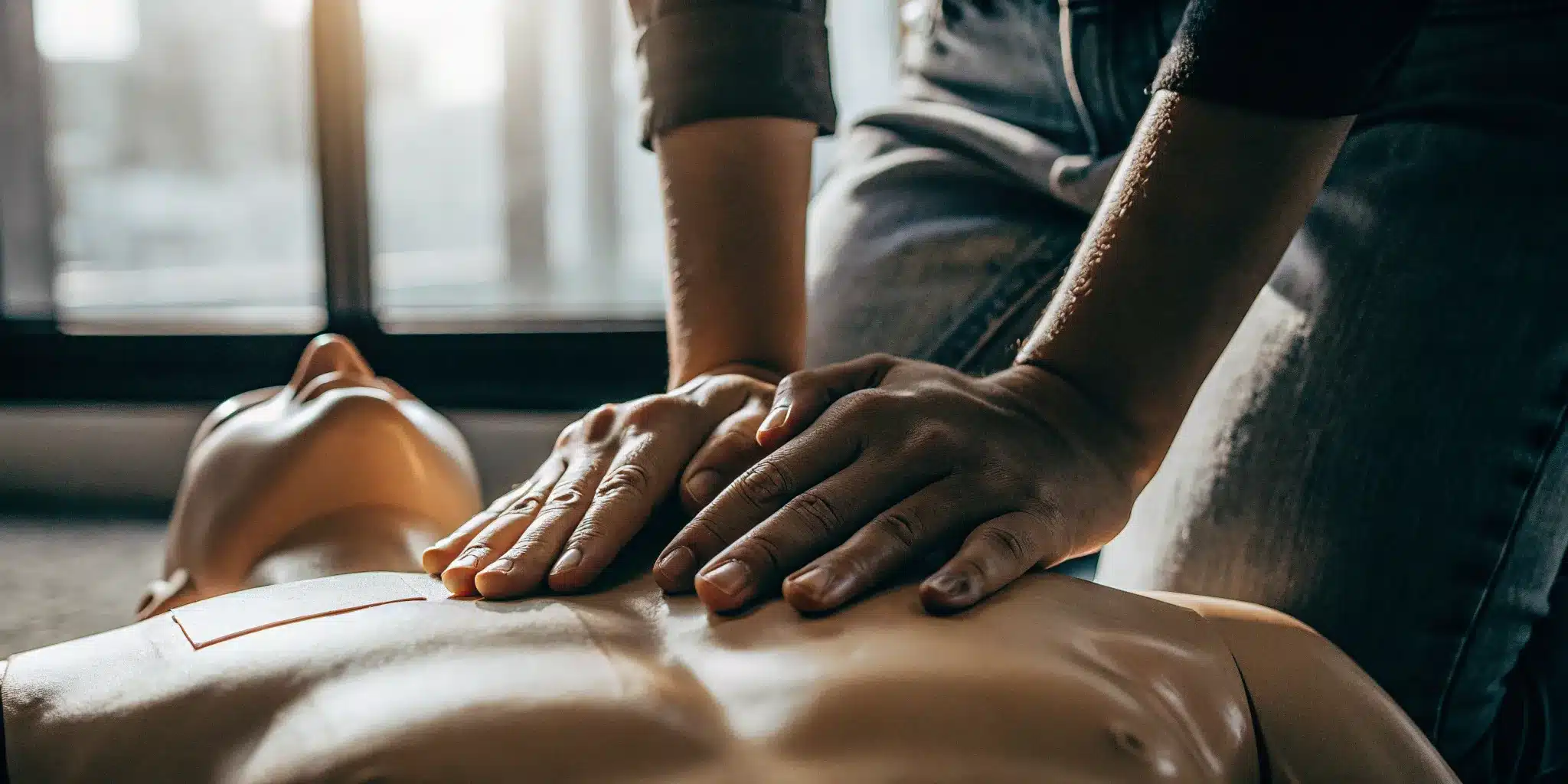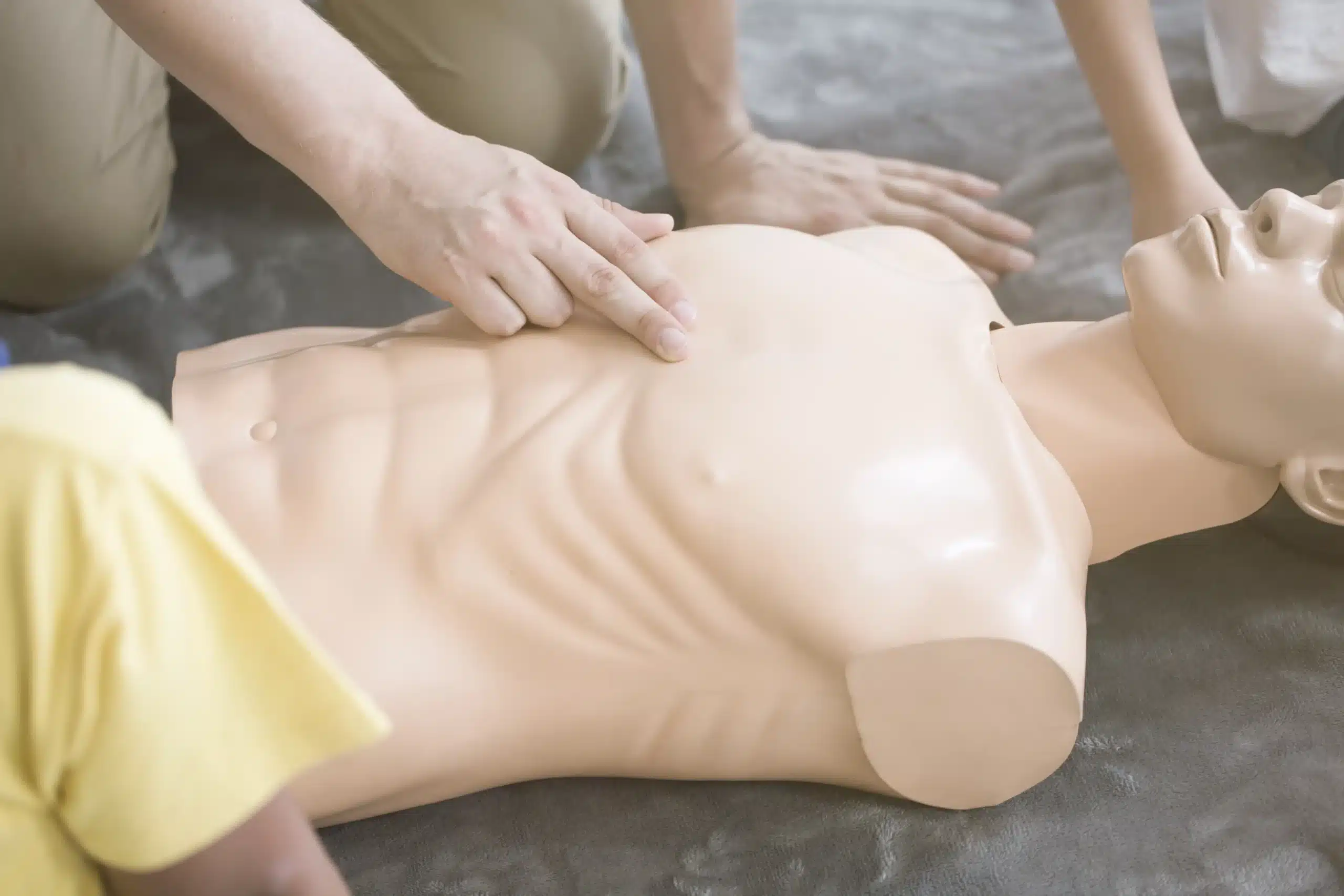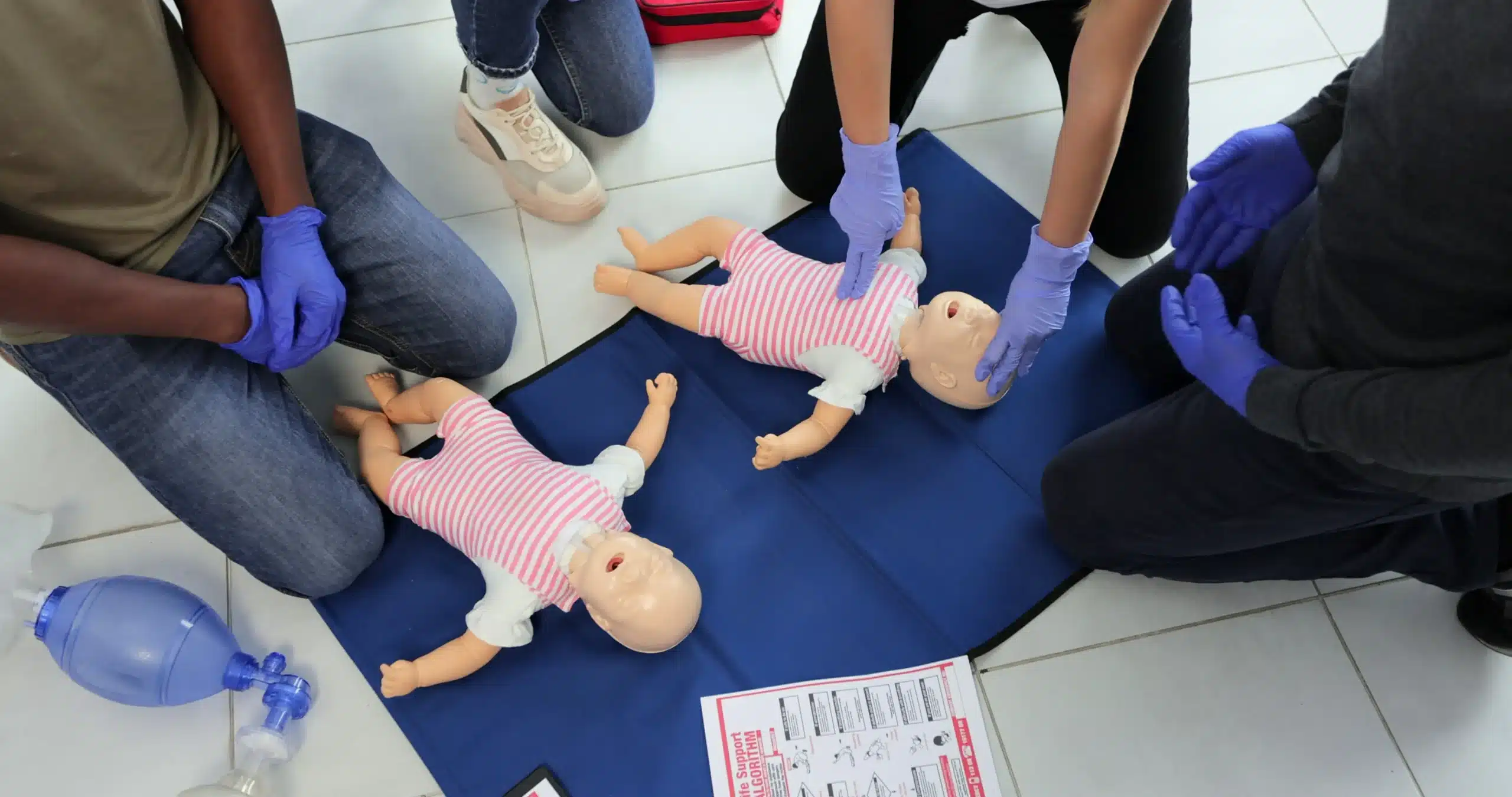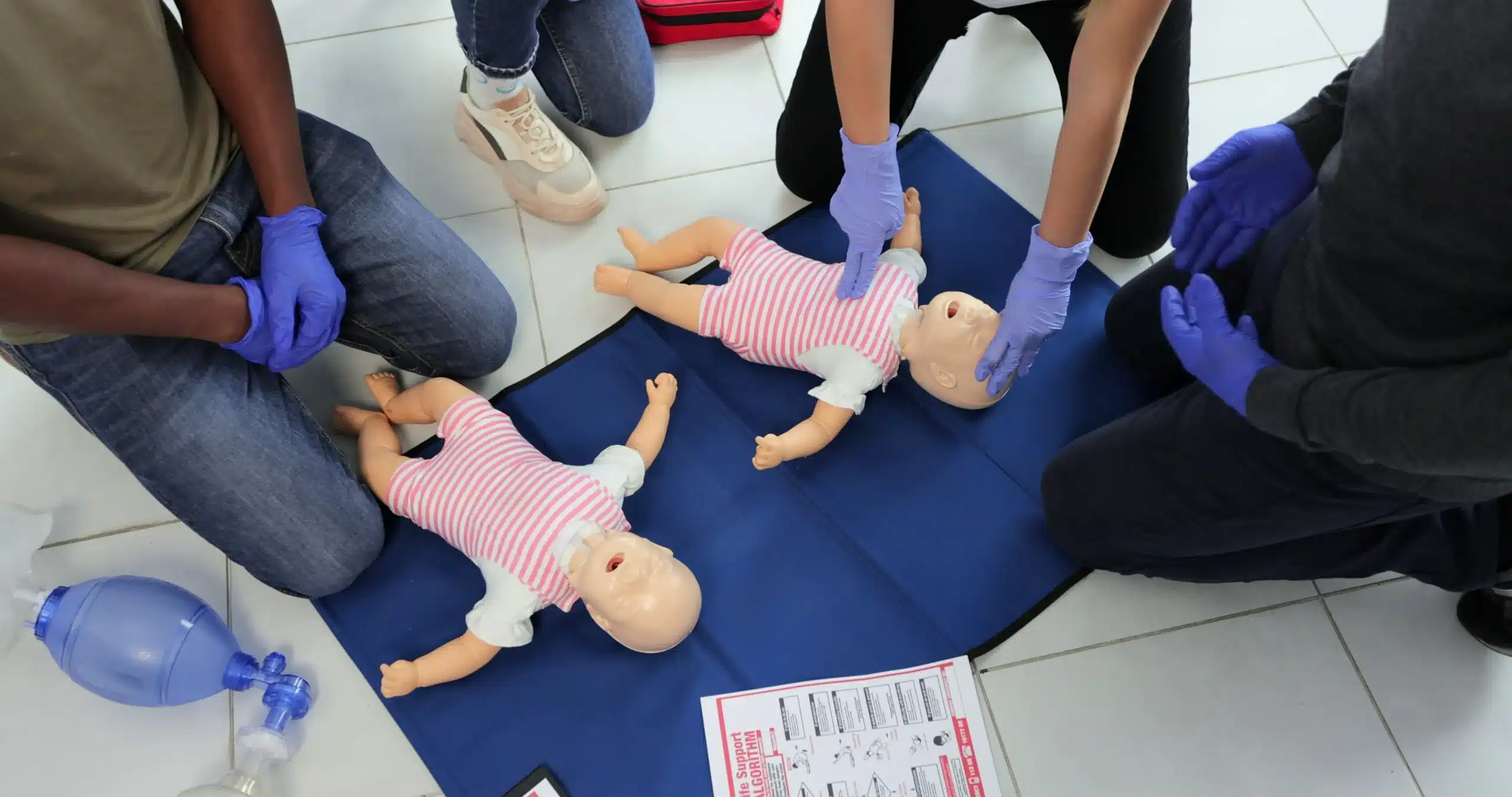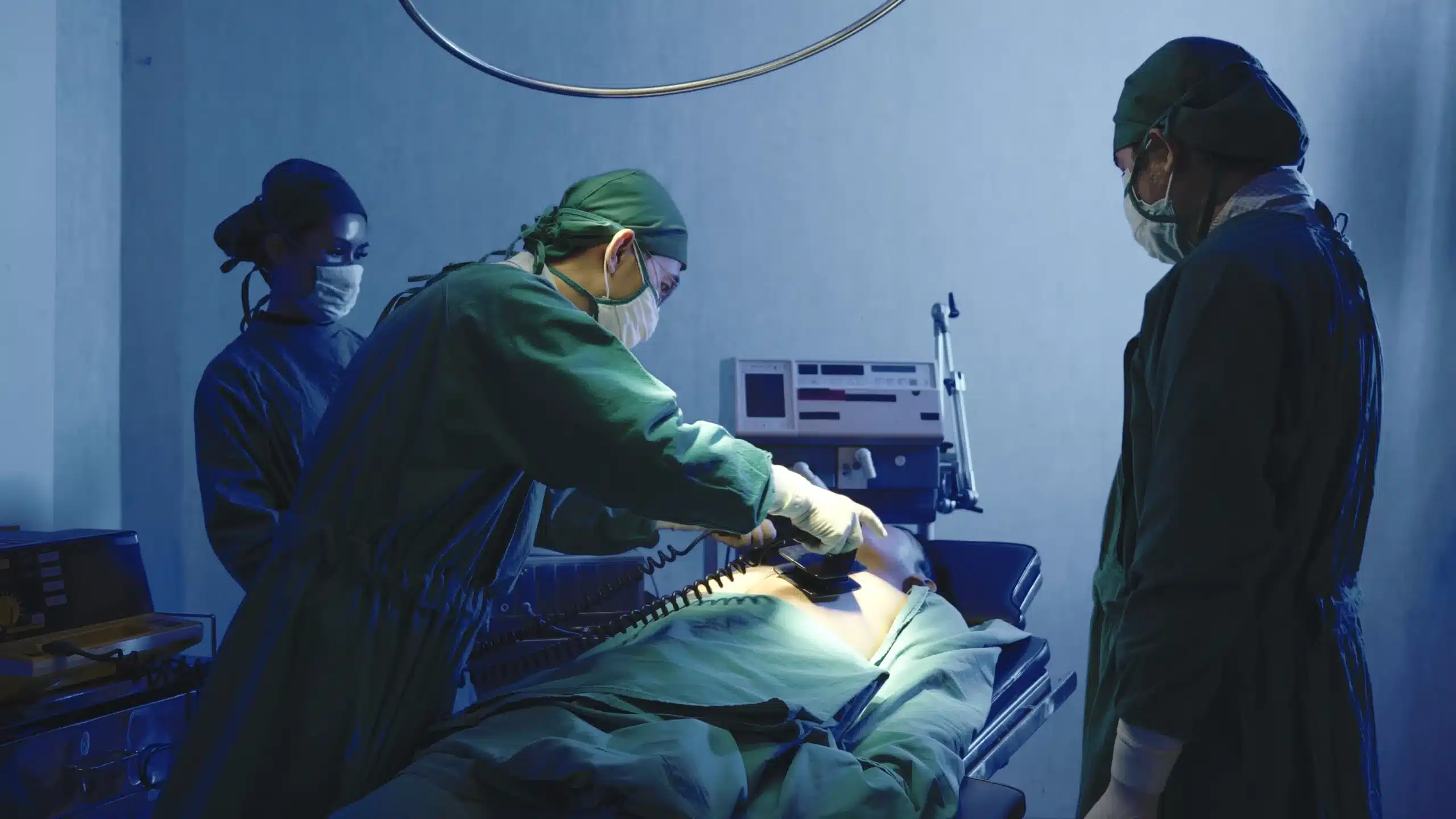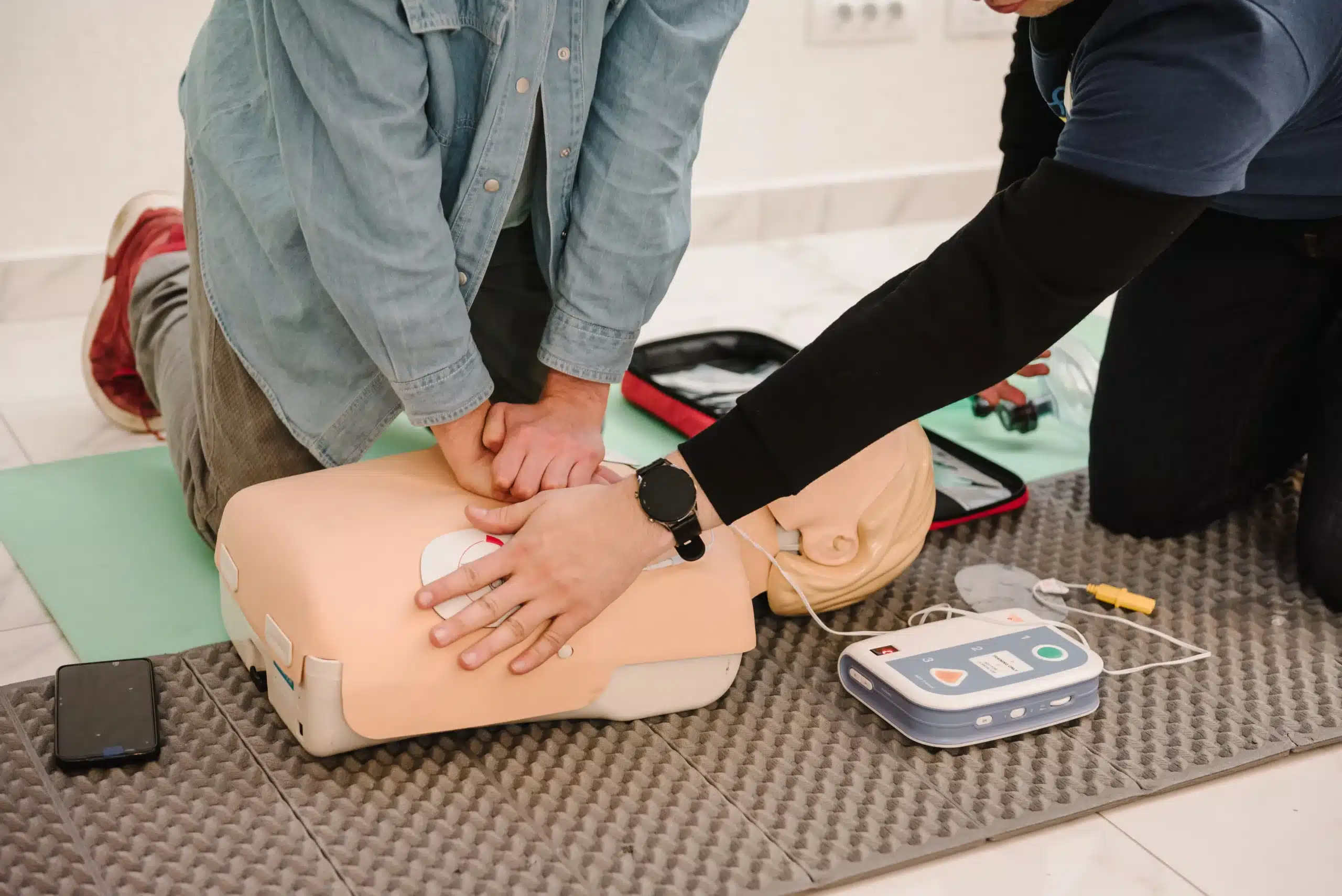Seconds matter in a medical emergency. CPR certification in Alameda equips you with the skills and confidence to act quickly and effectively when every moment counts. This guide explores the various CPR certification courses available in Alameda, from basic CPR and First Aid to advanced certifications like BLS, ACLS, and PALS. We’ll discuss the steps to get certified, the costs involved, and how to choose a reputable training provider. Whether you’re a healthcare professional, a student, or a concerned citizen, this guide will help you understand the importance of CPR certification in Alameda and how to get started.
Key Takeaways
- CPR certification empowers you to save lives: Find a course in Alameda, CA, that fits your needs, from basic CPR and first aid to advanced certifications like ACLS and PALS.
- Maintain your skills with regular refresher courses: CPR techniques evolve, so staying up-to-date is crucial for providing effective assistance during emergencies.
- Choose a reputable CPR provider like Alameda CPR Classes: Look for AHA-authorized training centers with experienced instructors, flexible scheduling, and a variety of courses.
What is CPR Certification in Alameda?
CPR certification in Alameda equips you with the life-saving skills to respond effectively during medical emergencies. It means you’ve completed a recognized training program covering cardiopulmonary resuscitation (CPR), often including AED use and basic first aid. These skills empower you to assist someone experiencing cardiac arrest, choking, or other life-threatening situations. A CPR certification demonstrates your preparedness to act quickly and confidently when seconds matter. This training isn’t just for healthcare professionals; it’s valuable for anyone in the community.
Several respected organizations offer CPR and First Aid certification courses in Alameda, including the American Heart Association (AHA) and the American Red Cross. These courses adhere to established guidelines, ensuring high-quality, consistent instruction. You’ll find various courses tailored to different needs and experience levels, from basic CPR for community members to advanced training for healthcare providers. Alameda CPR Classes offers a comprehensive selection of these courses, making it easy to find one that fits your schedule. Many classes are offered daily, allowing you to get certified quickly and conveniently.
CPR Certification Courses in Alameda
Alameda offers a variety of CPR certification courses to equip you with the lifesaving skills needed in various situations. Whether you’re a healthcare professional, a concerned citizen, or looking to advance your career, there’s a course designed to meet your specific needs. Let’s explore some of the key certifications available in Alameda.
Basic Life Support (BLS)
The Basic Life Support (BLS) certification covers core CPR skills for adults, children, and infants. You’ll also learn how to use an automated external defibrillator (AED) and how to relieve choking. BLS certification is crucial for healthcare providers and anyone who wants to be prepared for emergencies. Safety Training Seminars, an American Heart Association (AHA) Training Center, offers BLS classes daily at their Alameda location.
Advanced Cardiovascular Life Support (ACLS)
Advanced Cardiovascular Life Support (ACLS) training builds upon the foundation of BLS. It’s designed for healthcare professionals who manage cardiopulmonary arrest and other cardiovascular emergencies. This course covers advanced airway management, pharmacology, and team dynamics during resuscitation. Safety Training Seminars offers AHA-approved ACLS training, with flexible options for on-site group sessions.
Pediatric Advanced Life Support (PALS)
Pediatric Advanced Life Support (PALS) focuses on the specialized skills needed to respond to emergencies involving infants and children. This certification is essential for healthcare providers working in pediatrics, emergency medicine, and intensive care units. Safety Training Seminars also provides PALS training, giving healthcare professionals the expertise to handle pediatric emergencies.
First Aid Certification
First Aid certification provides comprehensive training in essential first aid skills. You’ll learn how to manage a range of injuries, including bleeding, burns, fractures, and other medical emergencies. This course often includes CPR training for all ages and AED instruction. Alameda CPR Classes offers a combined CPR and First Aid certification course, including an online component, skills testing, and AHA certification.
Get CPR Certified: A Step-by-Step Guide
Getting CPR certified is straightforward. Here’s a simple guide to help you through the process:
Choose the Right Course
First, determine which CPR certification best suits your needs. Do you need basic CPR and First Aid training for personal knowledge, or are you a healthcare provider requiring a more advanced BLS certification? Alameda CPR Classes offers various American Heart Association courses, including BLS, ACLS, PALS, and First Aid. Understanding the differences will help you select the appropriate course.
Register and Prepare
Once you’ve chosen your course, visit the Alameda CPR Classes website to view the schedule and register. The online calendar makes finding a convenient class time easy. Alameda CPR Classes offers daily classes and extended customer service hours. Review any pre-course materials provided before your class.
Attend Class and Demonstrate Skills
Your CPR class will involve hands-on training and skills testing. You’ll practice on mannequins, learning proper techniques for chest compressions, rescue breaths, and AED use. Instructors are available to guide you and answer questions. The skills practice involves physical activity, so be prepared.
Receive Your Certification
After successfully completing the course and skills test, you’ll receive your American Heart Association certification card that same day. This certification is valid for two years. Keep your card safe and remember to renew it before it expires.
CPR Certification: Cost & Value
Getting CPR certified is an investment in yourself and your community. But what does it actually cost? Let’s break down the pricing and explore ways to make your training as affordable as possible.
Course Pricing
Understanding course fees is the first step. At Alameda CPR Classes, our comprehensive CPR and First Aid certification course is priced at $140. This covers everything: online instruction, in-person skills testing, and your official certification card. This blended learning approach ensures you’re fully prepared for various emergency situations, from treating burns and seizures to administering an epi-pen.
Group Discounts & Special Offers
If you’re coordinating training for a group, such as coworkers, a team, or a community organization, take a look at our group discounts. We can also conduct the training at your location, making it even more convenient and potentially more affordable.
Low Price Guarantee
We’re committed to providing high-quality CPR training at competitive rates. We even offer a low-price guarantee within Alameda County, ensuring you receive excellent value for your CPR certification.
Certification: Duration & Validity
Course Length
CPR certification courses in Alameda offer flexible scheduling to accommodate various needs and skill levels. Basic Life Support (BLS) classes typically take between one and two hours. More advanced courses, like Advanced Cardiovascular Life Support (ACLS) and Pediatric Advanced Life Support (PALS), usually require three to four hours. This range allows you to select a course that fits your schedule and learning goals. Knowing the time commitment upfront helps you plan accordingly.
Certification Validity
Your CPR certification, once earned, remains valid for two years. This standard timeframe, observed by most organizations including the American Heart Association, ensures practitioners stay current with the latest CPR techniques and emergency response guidelines. This two-year validity period emphasizes the importance of staying up-to-date with life-saving practices. Learn more about CPR certification validity in Alameda.
Renew Your Certification
To maintain your skills and keep your certification current, consider taking refresher courses regularly. These courses not only fulfill the renewal requirement but also reinforce essential skills and knowledge for effective emergency response. Check with your chosen provider, such as Alameda CPR Classes, for available renewal options and schedules. Staying proactive with your training ensures you’re always prepared to act confidently in an emergency.
What Happens in a CPR Class?
Want to know what to expect in a CPR class? Here’s a quick rundown of a typical CPR course, from instruction to certification.
Instruction & Hands-on Practice
CPR classes blend instruction with hands-on practice. You’ll learn essential CPR techniques, including chest compressions, rescue breaths, and how to recognize the signs of a cardiac emergency. These courses adhere to the latest American Heart Association (AHA) guidelines. Instructors also cover using an Automated External Defibrillator (AED) and other basic life support skills. This combination of theory and practical training ensures you’re prepared to respond effectively in a real-life emergency. At Alameda CPR Classes, we emphasize a supportive learning environment where you can ask questions and practice your skills with confidence.
Training Equipment
Hands-on learning is a critical part of CPR training. You’ll practice on realistic, voice-assisted mannequins that provide feedback on your compressions and technique. This allows you to develop muscle memory and gain confidence in your abilities. While instructors may not be physically present during all portions of the skills testing, support is readily available if you need assistance. This approach allows for focused, individual practice while ensuring you have the guidance you need.
Evaluation & Testing
After you’ve practiced your skills, you’ll complete a skills test to demonstrate your proficiency. Watching the review videos provided can help you prepare and increase your chances of success. Upon successful completion of the class, you’ll receive your certification card the same day. At Alameda CPR Classes, we make it easy to get certified quickly and efficiently, so you can put your new skills to use right away.
Instructor Qualifications
Knowing you’re learning from a qualified professional adds confidence to your training experience. When choosing a CPR class, look for instructors with the right certifications, credentials, and experience.
Certifications & Credentials
Instructors should be certified by a nationally recognized organization like the American Heart Association (AHA). Alameda CPR Classes is an AHA Training Center, meaning our instructors meet the AHA’s rigorous standards. This ensures you receive high-quality training based on the latest scientific guidelines. Certification through a reputable organization also means your certification card will be widely accepted.
Experience
Beyond certifications, real-world experience matters. Our instructors often have backgrounds as EMTs, RNs, or paramedics. This practical experience translates to engaging and informative classes. They can offer valuable insights and answer your questions based on their firsthand knowledge. Look for classes taught by professionals who actively use their skills, keeping their knowledge sharp and relevant. This hands-on experience makes a real difference in the quality of instruction you receive.
Choose the Right CPR Provider
Finding the right CPR training provider is crucial for a valuable learning experience. Consider these factors when making your decision:
Accreditation & Recognition
Look for providers affiliated with nationally recognized organizations like the American Heart Association (AHA) or the American Red Cross. AHA-authorized providers adhere to specific guidelines and standards, ensuring high-quality training and credible certification. This recognition adds weight to your certification, whether you pursue it for personal growth or professional requirements. Alameda CPR Classes, offered by Safety Training Seminars, proudly holds this affiliation.
Courses & Flexibility
A good CPR provider should offer a range of courses to meet diverse needs. From basic CPR and First Aid to advanced certifications like ACLS and PALS, the right provider will have options for everyone. Flexibility in scheduling is also key. Safety Training Seminars offers classes daily in Alameda and throughout Northern California, accommodating busy schedules and various locations. This widespread availability makes finding a convenient class time and location much easier.
Instructor Quality & Facilities
Experienced and knowledgeable instructors significantly impact your learning. Check for instructor reviews and testimonials to gain insights into the quality of instruction. Safety Training Seminars uses a blended learning approach, combining online coursework with in-person skills sessions. This allows for flexible learning while still providing essential hands-on practice.
CPR Providers in Alameda
Alameda CPR Classes
Alameda CPR Classes, offered by Safety Training Seminars, provides a comprehensive selection of courses, including CPR, BLS, ACLS, PALS, and First Aid. Their commitment to low prices and same-day certification makes them a convenient and affordable option. Group discounts are also available, making it a cost-effective choice for workplaces or community groups.
American Heart Association Training Centers
Safety Training Seminars, located in Alameda, is an AHA-approved training center. This accreditation ensures their courses meet the rigorous standards set by the AHA, providing students with a nationally recognized and respected certification.
Red Cross Certified Providers
While Safety Training Seminars primarily focuses on AHA certifications, many providers in Alameda also offer Red Cross-certified courses. AHA is a good resource for finding various CPR providers and comparing their offerings in the area. Check with individual providers to confirm their specific certifications.
Local Hospitals and Medical Centers
Many local hospitals and medical centers partner with certified training providers or offer in-house CPR courses. Contacting these institutions directly can provide additional options for CPR certification in Alameda.
Benefits of CPR Certification
Getting CPR certified isn’t just about acquiring a skill; it’s about gaining confidence and empowering yourself to make a difference. Whether for personal growth, career advancement, or simply contributing to a safer community, the advantages are numerous.
Personal Growth & Career Advancement
Learning CPR can be a personally enriching experience. It equips you with the skills to respond effectively in critical situations, fostering self-reliance and preparedness. This newfound confidence can extend beyond emergency scenarios, positively impacting various aspects of your life. As CPR Education points out, CPR certification demonstrates a commitment to community well-being. It shows you care and are willing to take action. For those seeking CPR classes in Alameda, this is a valuable aspect to consider.
Furthermore, CPR certification can significantly enhance your career prospects. In many healthcare and related fields, it’s a prerequisite or a highly valued asset. Having this certification can open doors to new opportunities and give you a competitive edge. For those already working in these sectors, maintaining current CPR certification demonstrates professionalism and a dedication to providing the highest standard of care. Safety Training Seminars, a reputable provider of safety certifications, emphasizes the importance of customer service and convenience, making it easier than ever to acquire and maintain this vital skill.
Community Safety
The most significant benefit of CPR certification is its impact on community safety. CPR and first-aid training empower individuals to respond effectively during medical emergencies, potentially saving lives. CPR Education highlights that 70% of cardiac arrests happen outside hospitals, emphasizing the crucial role bystanders play. Knowing how to perform CPR correctly can dramatically increase survival rates until professional medical help arrives.
CPR and first-aid classes in Alameda provide residents with the skills and confidence to handle such emergencies. These courses not only teach the technical aspects of CPR but also emphasize the importance of preparedness and quick thinking. By becoming CPR certified, you become an active participant in creating a safer and more resilient community, ready to assist those in need during critical moments.
CPR Certification: Debunking Myths
Let’s clear up some common misconceptions about CPR certification. These myths can prevent people from getting trained and being prepared for emergencies.
One-Time Class Myth
One persistent myth is that a single CPR class equips you for life. Unfortunately, that’s not true. Like any skill, CPR techniques evolve, and your knowledge can fade over time. Regular refresher courses are crucial for staying up-to-date and confident in your abilities, ensuring you can provide effective assistance during a real emergency.
Mouth-to-Mouth Myth
Many hesitate to learn CPR because they’re uncomfortable with the idea of mouth-to-mouth resuscitation. While rescue breaths are a part of comprehensive CPR training, chest compressions are the most critical element. Hands-only CPR is often recommended for those who haven’t received formal training or are unsure about providing rescue breaths. Remember, any attempt at CPR is better than none.
State-Specific Certification Myth
CPR certification isn’t one-size-fits-all. While the core principles remain consistent, specific requirements might vary by location. It’s always best to confirm your chosen certification meets the requirements in your area, especially if you work in healthcare or a field where CPR certification is mandatory. Alameda CPR Classes offers courses compliant with local guidelines for those seeking certification in Alameda, California.
Medical Professional Myth
Another misconception is that only medical professionals need CPR training. Emergencies can happen anytime, anywhere, and the first person on the scene could be anyone. Knowing CPR empowers anyone to potentially save a life. CPR and first-aid training are valuable skills for everyone.
Related Articles
- CPR Classes in Alameda, CA
- AHA ACLS Classes in Alameda, CA – Alameda CPR Classes
- AHA PALS Classes in Alameda, CA – Alameda CPR Classes
- Debunking Common CPR Myths for Life-Saving Confidence
- The Importance of CPR in Saving Lives – Alameda CPR Classes
Frequently Asked Questions
How quickly can I get CPR certified in Alameda?
You can get certified remarkably fast! Alameda CPR Classes offers same-day certification upon successful completion of the course and skills test. Many classes are available daily, so finding a time that works for you is easy.
What’s the difference between BLS and CPR certification?
CPR is the core skill within BLS (Basic Life Support) certification. BLS encompasses CPR techniques, AED use, and relief of choking. It’s a broader certification often preferred by healthcare providers and those seeking a more comprehensive skillset. CPR certification focuses solely on cardiopulmonary resuscitation techniques.
How much does CPR certification cost in Alameda?
The cost varies depending on the provider and the type of course. Alameda CPR Classes offers a combined CPR and First Aid certification course for $140, which includes online instruction, in-person skills testing, and your certification card. They also offer a low-price guarantee in Alameda County and group discounts.
How long is a CPR class, and how long is the certification valid?
CPR classes range from one to four hours, depending on the course level. Basic CPR and BLS courses typically take a few hours, while more advanced courses like ACLS and PALS require longer. Once certified, your CPR certification is valid for two years.
What if I’m nervous about performing mouth-to-mouth resuscitation?
While rescue breaths are part of comprehensive CPR training, chest compressions are the most critical component. Hands-only CPR is a viable option, especially for those hesitant about mouth-to-mouth. Any attempt at CPR is better than none, and your actions can still make a difference.


